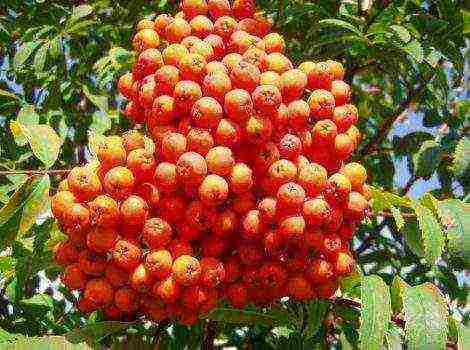Content
Black (chokeberry) and red mountain ash are distant relatives. Both plants belong to the same family, but in different genera. Red - to the genus Sorbus, black-fruited - to the genus Aronia.
Rowan "blackberry" is called only due to the external similarity of inflorescences and seedlings: juicy false drupes, collected in a brush. Another unifying feature is the benefits and medicinal properties of the fruit.
Further in the article, we will consider the beneficial properties of chokeberry, learn about the health risks and medicinal properties of the berry.
Cultural chokeberry, widespread in Russian gardens, is the brainchild of Ivan Vladimirovich Michurin. Its ancestor is a wild North American shrub (Black chokeberry) with poorly edible fruits, which is considered a malicious weed in its homeland. Having received his seeds, the Russian breeder began long-term experiments on the hybridization of the "American".
According to various sources, the crossing went either along the line Aronia chokeberry - Aronia syrup, or along the line Aronia chokeberry - Rowan ordinary. As a result, a new plant appeared with tart, slightly dry fruits, which are called "apples" in fruit growing. In honor of its creator, it was named Aroniy Michurin.

Chokeberry composition
Let's start with the question, how is chokeberry useful? The dark purple, almost black color of the chokeberry fruit speaks for itself: there are a lot of anthocyanins in them. These substances in the plant not only play the role of a pigment, but also protect tissues from oxidative stress. Why is this important for a person? The fact that anthocyanins are the very notorious antioxidants that have entered the lexicon of cosmetologists and pharmacists. They neutralize oxygen free radicals that can cause cell mutations.
The astringent taste of blackberry is the merit of tannins. These are the so-called "tannins" that bind carcinogens and reduce the risk of tumor formation.
Chokeberry fruits, despite the sweetness, are quite low in calories - only 55 kcal per 100 g. The vitamin and mineral composition is rich:
| Substances | Content in 100 g of product |
| Vitamins:
vitamin C vitamin A vitamin b1 vitamin b2 vitamin b6 vitamin b9 vitamin E vitamin PP beta carotene |
15 mg 200 mcg 0.01 mg 0.02 mg 0.06 mg 1.7 mcg 1.5 mg 0.6 mg 1.2 mg |
| Minerals:
potassium calcium magnesium phosphorus sodium iron |
158 mg 28 mg 14 mg 55 mg 4 mg 1.1 mg |
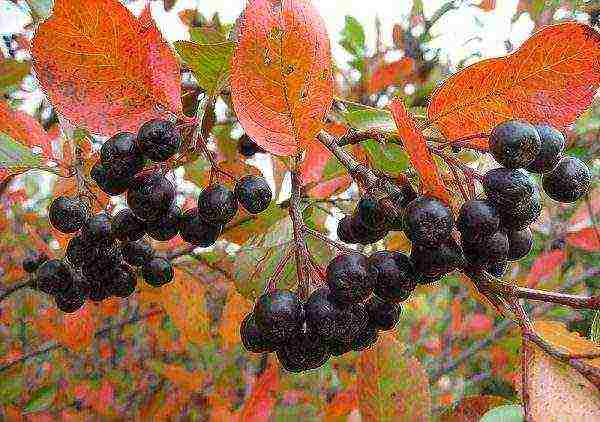
Black mountain ash treatment
Now let's look at the medicinal properties of the chokeberry. Chokeberry fruits have long been taken into service as a medicinal raw material. Particular attention should be paid to them for people with cardiovascular problems and diabetics. Eating only 100 grams of blackberries daily can help you quickly regulate your cholesterol and blood sugar levels. The use of these fruits for medicinal purposes is indicated for many diseases:
- Hypertension... Aronia has a diuretic effect, due to which blood volume decreases and blood pressure decreases.
- Atherosclerosis... Flavonoids and vitamins C, E and A strengthen the walls of blood vessels.
- Decreased immunity and inflammatory processes. Chokeberry anthocyanins are also able to help with infectious diseases of bacterial etiology.
- Hypoacid gastritis... Chokeberry fruits increase the acidity of gastric juice.
- Sleep disturbances, nervousness. Blackberry reduces anxiety by acting as a natural sedative.
- Toxicosis of pregnant women. The hepatoprotective effect of chokeberry fruit helps to cope with nausea.
- Diarrhea. Tannins have an astringent effect, normalizing digestion.
- Visual impairment. Vitamin A, which is part of the visual purpura, normalizes many processes. Blackberry is especially useful for "senile eyes", reducing the risk of glaucoma and cataracts.
- Chokeberry fruit recommended for people affected by radiation or living in areas with poor ecology. In this case, you need to ensure that the fruits consumed are grown in safe regions.
The benefits of chokeberry are obvious, but you should not forget about the precautions. People with thrombosis, ulcerative processes of the stomach and intestines, with colitis, constipation, hyperacid gastritis and hypotension should use these fruits carefully.

Red rowan
Red mountain ash is a common element of Russian phytocenoses. It is found everywhere, includes many species and two life forms: shrub and arboreal. But on personal plots it is almost never planted on purpose. And in vain.
Firstly, mountain ash lends itself well to shaping and can become an interesting accent in decorative plantings. Secondly, its fruits are no less useful than the widely used chokeberry fruits.
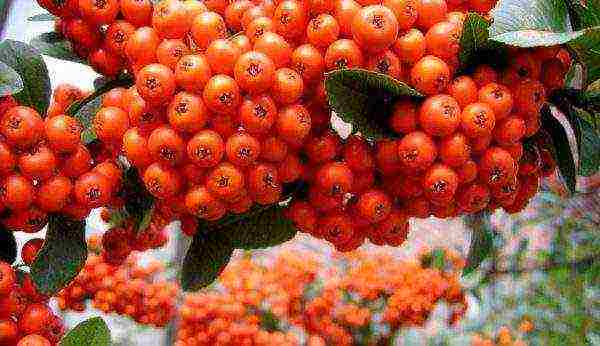
The composition of the fruits of red berries and benefits for the body
Red rowan fruits are bitter, which is good. Bitterness is given to them by parasorbic acid - a substance with very high antimicrobial activity. Back in the middle of the 20th century, the legendary biochemist Mikhail Mikhailovich Shemyakin conducted experiments with mice infected with Salmonella. After the introduction of 1 mg of diluted parasorbic acid into the peritoneum, the experimental animals recovered.
Other valuable substances found in rowan "apples" are flavonoids, which can increase the body's resistance to radiation, and pectins. The jelly-forming properties of the latter are used not only in cooking, but also in medicine - to bind and remove toxins.
The calorie content of rowan fruits is 50 kcal per 100 g. They are invaluable as a multivitamin raw material. Rowan is a record holder among other plants in many respects.
| Substances | Content in 100 g of product |
| Vitamins:
vitamin C vitamin A vitamin b1 vitamin b2 vitamin b9 vitamin E vitamin PP beta carotene |
70 mg 1500 mcg 0.05 mg 0.02 mg 0.2 μg 1,4 mg 0.5 mg 9 mg |
| Minerals:
potassium calcium magnesium phosphorus sodium iron manganese copper zinc |
230 mg 2 mg 331 mg 17 mg 10 mg 2 mg 2 mg 120 mcg 0.3 mg |
The chemical composition of the fruits of the red rowan clearly shows that in terms of the content of carotene and vitamin A, this plant will give a head start to carrots. Rowan juice contains the highest amount of vitamin C of any fruit juice.
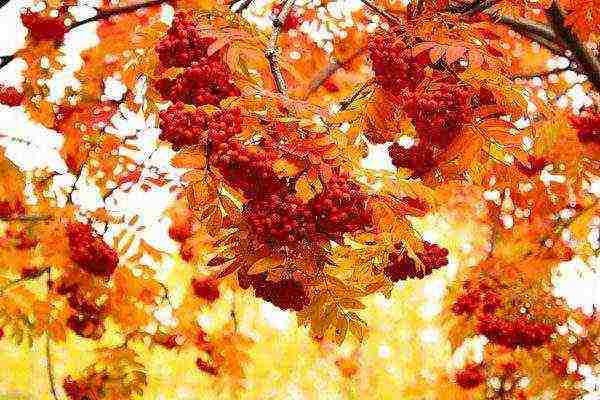
Medicinal properties and contraindications of red rowan
And now let's consider what diseases mountain ash treats. In ancient clinics, you can find many recipes for treatment from the fruits of the red rowan. Since ancient times, they were considered a panacea for dysentery, scurvy and hemorrhoids, used as a disinfectant, diuretic, laxative, choleretic and anti-inflammatory agent. WITHModern research confirms the findings of traditional medicine. Today, red rowan (dried and fresh) is used in cases where:
- rapid strengthening of immunity is required in case of a viral or other infection;
- you need an anti-inflammatory agent complementary to drug therapy for tonsillitis, bronchitis, laryngitis, tracheitis, pharyngitis, otitis media and so on;
- it is required to strengthen the vascular walls;
- you need a remedy for anemia;
- it is required to stimulate appetite and increase intestinal tone;
- a natural wound healing or antimycotic agent is required.
Contraindications to the use of red rowan fruits are hypotension, thrombosis, hyperacidosis gastritis, gastrointestinal ulcers, diarrhea, ischemia, heart attack, pregnancy and early childhood.
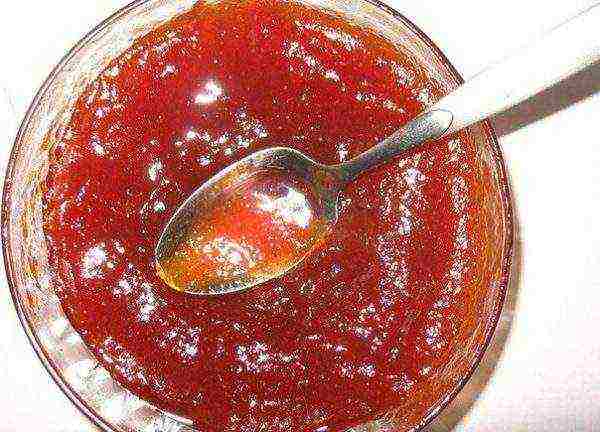
Harvesting and storage of rowan fruits
Chokeberries are harvested from mid-September until frost. It is better not to hesitate with the collection, because these berries are readily pecked by birds and crumble when overripe. Collect them, cutting off the fruit from the branch entirely, and then pick the berries in the dishes. Then they are washed and sent to drying.
Red mountain ash is best harvested in late October or November, when it is slightly affected by frost. Such fruits are not stored, but they are guaranteed not to be toxic. Once collected, they should be recycled immediately. For example, you can make rowan juice with pulp for the winter.


